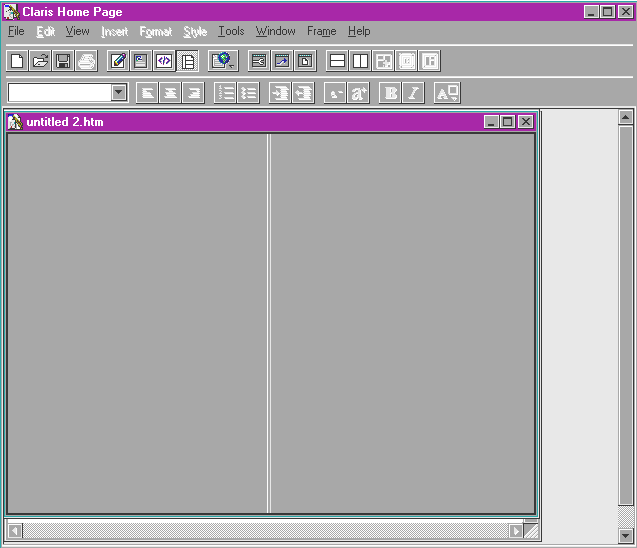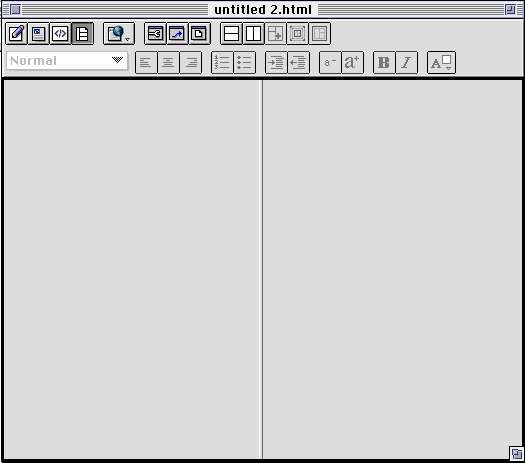
A page that uses frames (also known as the root frameset) can show your audience the entire scope of your site in one window and make it easy to navigate through the pages. You can place as many frames in a page as you like and you can resize the frames and change their orientation. You can place a Web page that contains links in one navigational frame and have the links open different Web pages in another frame.
Note Before you decide to use frames, be aware that they are a new feature of the Netscape extensions to HTML 3.0 and aren't supported by many Web browsers.
Claris Home Page automatically adds an explanatory message to pages that use frames for people who use Web browsers that don't support frames. You should customize this message by changing it in Edit Page mode and insert a link to a non-frame version of your Web page if you want.

